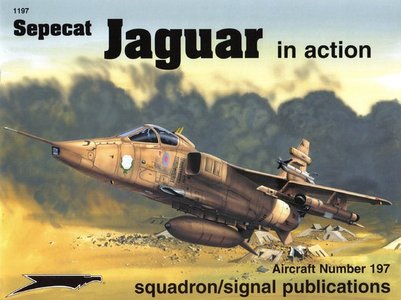Glenn Ashley - Sepecat Jaguar In Action
Squadron/Signal Publications | 2005 | ISBN: 0897474910 | English | 52 pages | PDF | 33.46 MB
Aircraft Number 197
Squadron/Signal Publications | 2005 | ISBN: 0897474910 | English | 52 pages | PDF | 33.46 MB
Aircraft Number 197
In the 30 years since its introduction into front-line military service the SEPECAT Jaguar has given sterling front-line service to several air arms around the World. Whenever it has been called into combat service it has shown excellent reliability as well as operational capabilities. Not a bad testament to an aircraft originally intended purely as an advanced trainer for use by the British and French air forces.
Its roots go back to a period when Great Britain and France worked very closely to produce several important Anglo-French types such as the Lynx, Gazelle and the best known -Concorde.
At the start of the 1960's both the Royal Air Force and Armee de l'Air were looking for a new advanced trainer that would enter service by the end of the decade. This new design had to be stable enough for a fairly inexperienced pilot to adapt to with a minimum of problems, but be advanced enough to be a challenging step up from basic trainers such as the Folland Gnat and Fouga Magister onto front-line types.
The British needs had been grouped together under the Air Staff Target 362 (AST362) which was put out to tender amongst the British aircraft manufacturers. Several companies responded including the Preston Division of the British Aircraft Corporation which featured variable geometry wings, indeed resembling what would look much akin to a later design, the Tornado. With stinging defense cuts by the British Labor Government, the development time and costs more than justified a swing wing aircraft, although following the cancellation of the TSR.2 the British were very close to purchasing the F-l 1 IK for RAF service. The other option was to cut development costs by joining forces with the French aviation industry.



